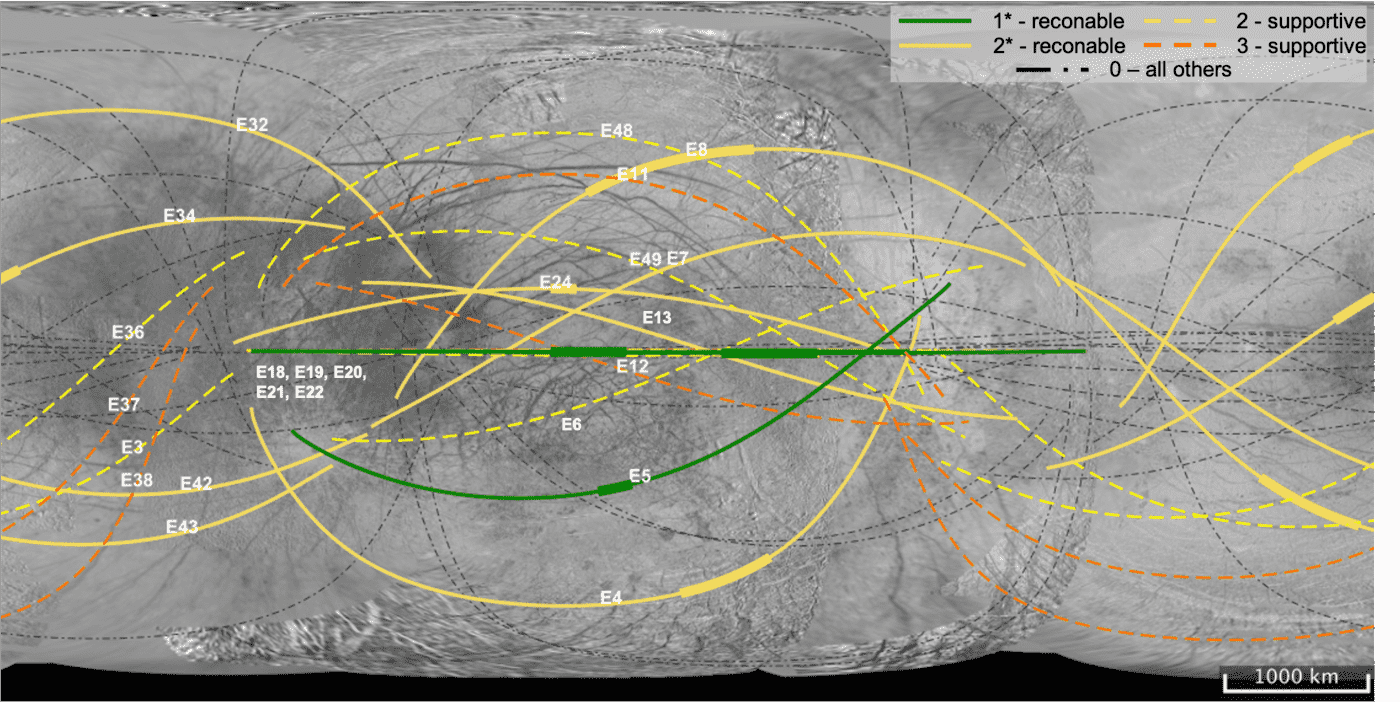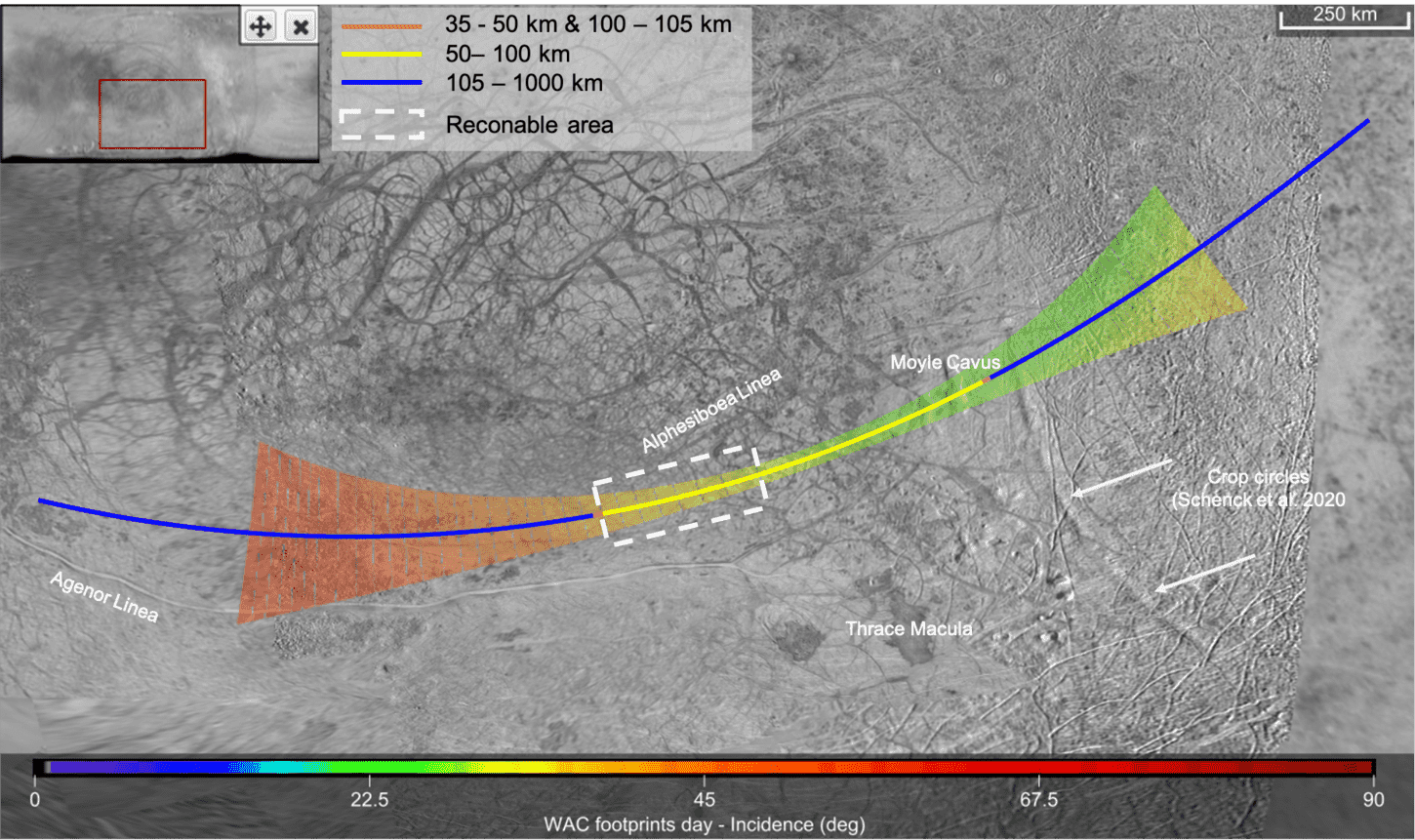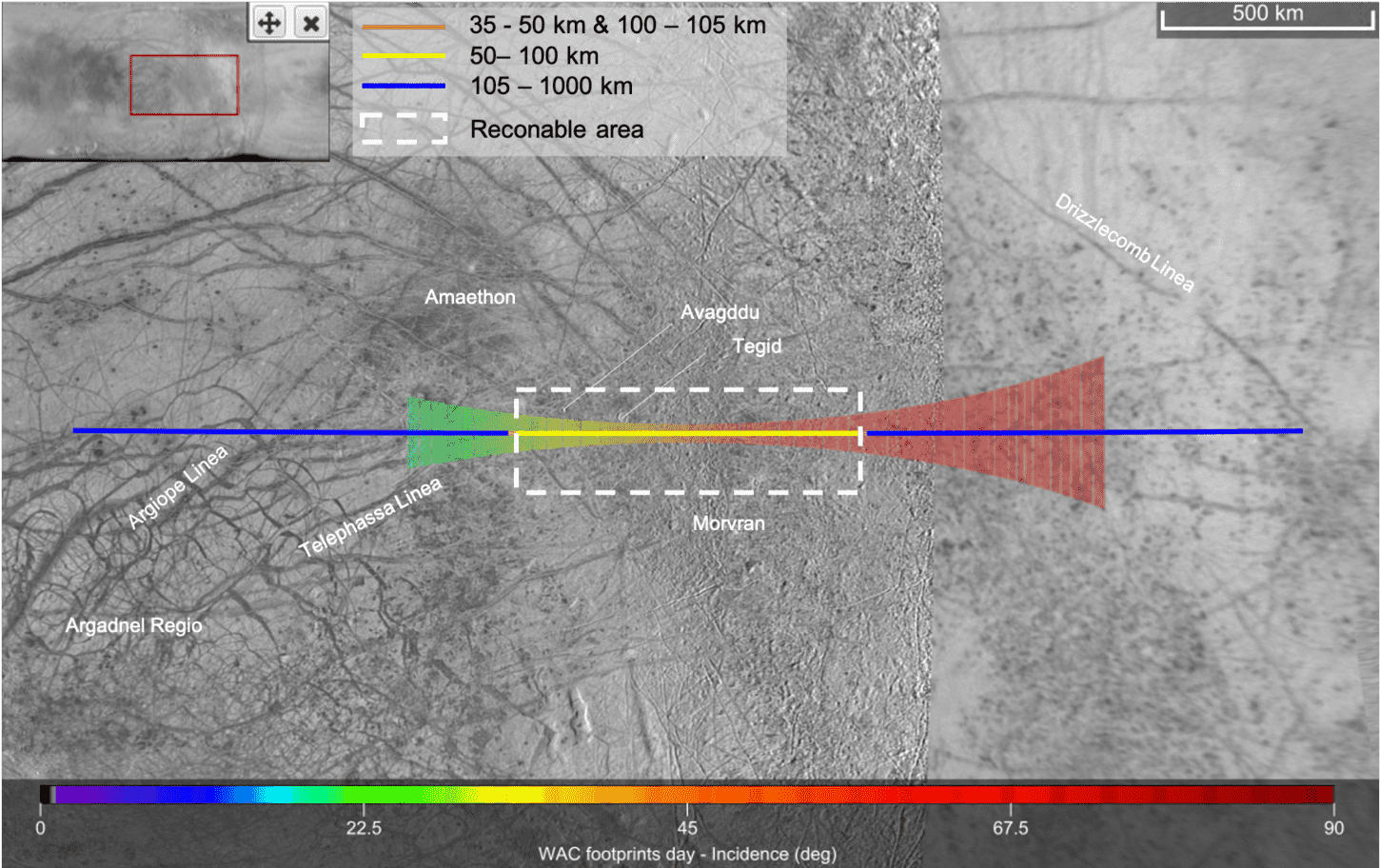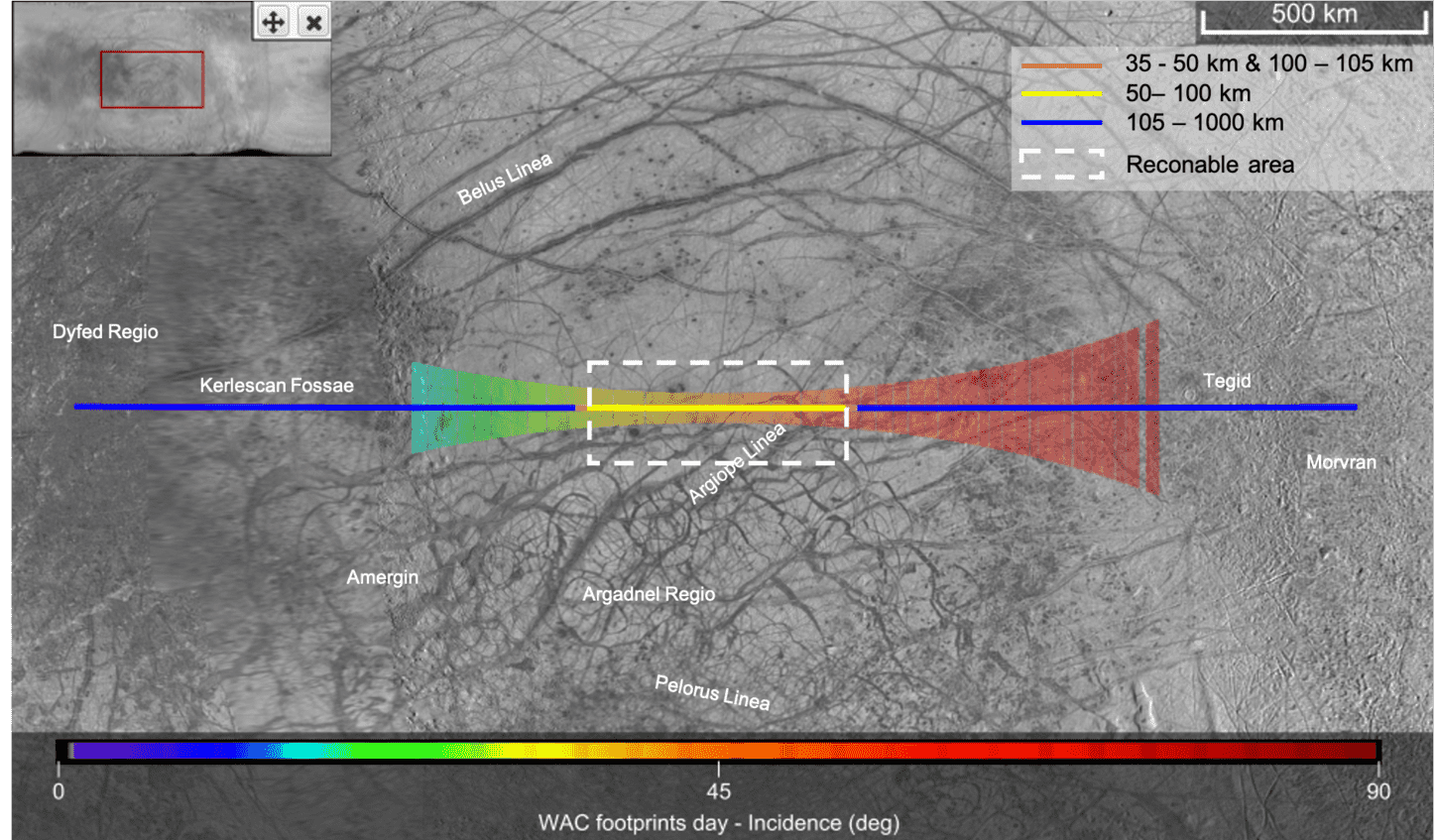Potential landing sites to be surveyed by Europa Clipper
- 1Jet Propulsion Laboratory, California Institute of Technology.
- 2University of Texas at Austin Institute for Geophysics, Austin, TX, USA.
- 3Physics and Astronomy Department, Wheaton College, Norton, Massachusetts.
- 4Johns Hopkins Univ. Applied Physics Lab., LLC (United States).
- 5Cornell Center for Astrophysics and Planetary Science, Cornell University, Ithaca, New York.
- 6Lunar and Planetary Laboratory, University of Arizona, Tucson, AZ, USA.
- 7Southwest Research Institute, San Antonio, TX, USA
The NASA Europa Clipper mission [1] will explore Jupiter’s icy moon Europa via multiple flybys in the early 2030s. The ocean world Europa is one of the most promising locations to search for life elsewhere in the Solar System [2, 3, 4, 5] and thus, Europa Clipper’s main goal is to characterize Europa’s habitability. In the future, a follow-on landed mission may possibly explore Europa from its surface. In the Europa Clipper science team, the work of the Reconnaissance Focus Group has been to assess the trajectory for opportunities [6]. Here we show that 12 of the 49 currently planned flybys for the prime mission of Europa Clipper [7] survey at least one area where the fundamental requirements for terrain relative navigation (TRN) are fulfilled. We use the term ‘reconable’ to refer to these 12 flybys.
What is a “reconable” flyby?
A ‘reconable’ flyby contains at least one section where the following fundamental (i.e., architecture independent) requirements for terrain relative navigation (TRN) are fulfilled, as based on current technology [8, 9]:
- Time of day: the data must be taken during the Europan day (i.e. lit by sunlight)
- Incidence angle of data: 30°- 60° for TRN process to be successful, 20°- 30° may be usable in some instances, but there is a rapid degradation above 60°.
- Altitude: 50-100 km for sufficiently high spatial resolution data with minimal smearing. 100-105 km altitude may be useable in some instances.
Thus, only 12 of the 49 flybys are reconable.

Fig. 1: Global map of Europa with the footprint of all 49 flybys currently planned for Europa Clipper’s prime mission. Reconable and supporting flybys are in solid colored lines.
Most promising flybys
Using data from the Galileo mission, we study what is currently known about our reconable areas, and rank these flybys based on scientific criteria. The current rankings reflect our present-day knowledge and are highly likely to change with Europa Clipper’s in-depth study of the moon’s geological, geochemical and geophysical characteristics.
Three of them have exceptional scientific interest. They all show signs of recent activity and have been covered significantly enough by past missions to make a comprehensive assessment of their potential. Some highlights include

Fig. 2: Ground track for planned E5 flyby. Reconable area highlighted by white box.

Fig. 3: Ground track for planned E19 flyby. Reconable area highlighted by white box.

Fig. 4: Ground track for planned E22 flyby. Reconable area highlighted in white box.
Conclusion
Reconable flybys are relatively rare and important in the prime mission of Europa Clipper: only 12 out of 49. It’s important to recognize that this current assessment is limited by the data available. Rankings will probably evolve as the data from Europa Clipper, and particularly from the Europa Imaging System (EIS) [10] gets processed. This work demonstrates the process that can be used by the Europa Clipper team to assess potential landing sites.
Great potential landing sites do exist: there are places on Europa’s surface that are both particularly scientifically interesting (e.g., rank 1* reconable flybys) AND where we will collect data that is suitable for enabling safe and successful landing based on current technologies.
The results of this work have been shared with the Geology Working Group (Pappalardo et al. 2024 (under review), Daubar et al. 2024) / the broader science team of Europa Clipper, and will be integrated in the science input provided for observation planning.
Acknowledgements
This work was supported by the Europa Clipper Project. The research described in this manuscript was carried out at the Jet Propulsion Laboratory, California Institute of Technology, under a contract with the National Aeronautics and Space Administration. Our team would also like to acknowledge the work from the Galileo instrumental teams and the PDS imaging node for making this data publicly available.
References
[1] Howell & Pappalardo, Nature Comm, 2020.
[2] Pappalardo et al. JGR: Planets, 1999.
[3] Carr et al. Nature 1998.
[4] Vance et al. JGR: Planets, 2018.
[5] Cockrell et al. Astrobiology, 2016.
[6] Phillips et al. PSJ, in revision.
[7] Pappalardo et al. SSR, accepted.
[8] Johnson et al. AIAA Guidance, Navigation, and Control Conference, 2015.
[9] Neleseen et al. IEEE Aerospace Conference, 2019.
[10] Turtle et al. SSR under review.
How to cite: Belgacem, I., Scully, J. E. C., Parekh, R. A., Phillips, C. B., Grima, C., Collins, G. C., Craft, K., Detelich, C., Leonard, E., Mishra, I., Patterson, W., Prockter, L. M., Sutton, S. S., Stickle, A. M., and Wyrick, D. Y.: Potential landing sites to be surveyed by Europa Clipper, Europlanet Science Congress 2024, Berlin, Germany, 8–13 Sep 2024, EPSC2024-132, https://doi.org/10.5194/epsc2024-132, 2024.